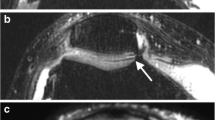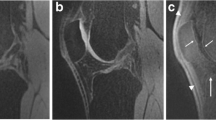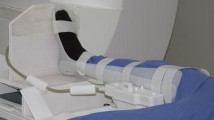Abstract
Objective. The objective of this study was to analyse the potential of magnetic resonance imaging for valid determination of patellar cartilage thickness, comparing currently available pulse sequences. Design. In six patients and one cadaver the cartilage was repetitively imaged employing three spin-echo and six three-dimensional gradient-echo sequences. In the cadaveric specimen the total volume and the regional distribution of cartilage thickness were assessed and compared with the values obtained from anatomical sections by image analysis. Results and conclusions. The FLASH and fat-suppressed FLASH sequences allowed the most accurate determination of the cartilage volume and thickness. Fat-suppression considerably increased the contrast of the cartilage to the synovial fluid, fat and bone marrow, yielding higher reproducibility of the volumetric measurements. The remaining difference from the anatomical volume and thickness may be because the calcified cartilage is not delineated by magnetic resonance imaging.
Similar content being viewed by others
Author information
Authors and Affiliations
Rights and permissions
About this article
Cite this article
Sittek, H., Eckstein, F., Gavazzeni, A. et al. Assessment of normal patellar cartilage volume and thickness using MRI: an analysis of currently available pulse sequences. Skeletal Radiol 25, 55–62 (1996). https://doi.org/10.1007/s002560050032
Issue Date:
DOI: https://doi.org/10.1007/s002560050032




